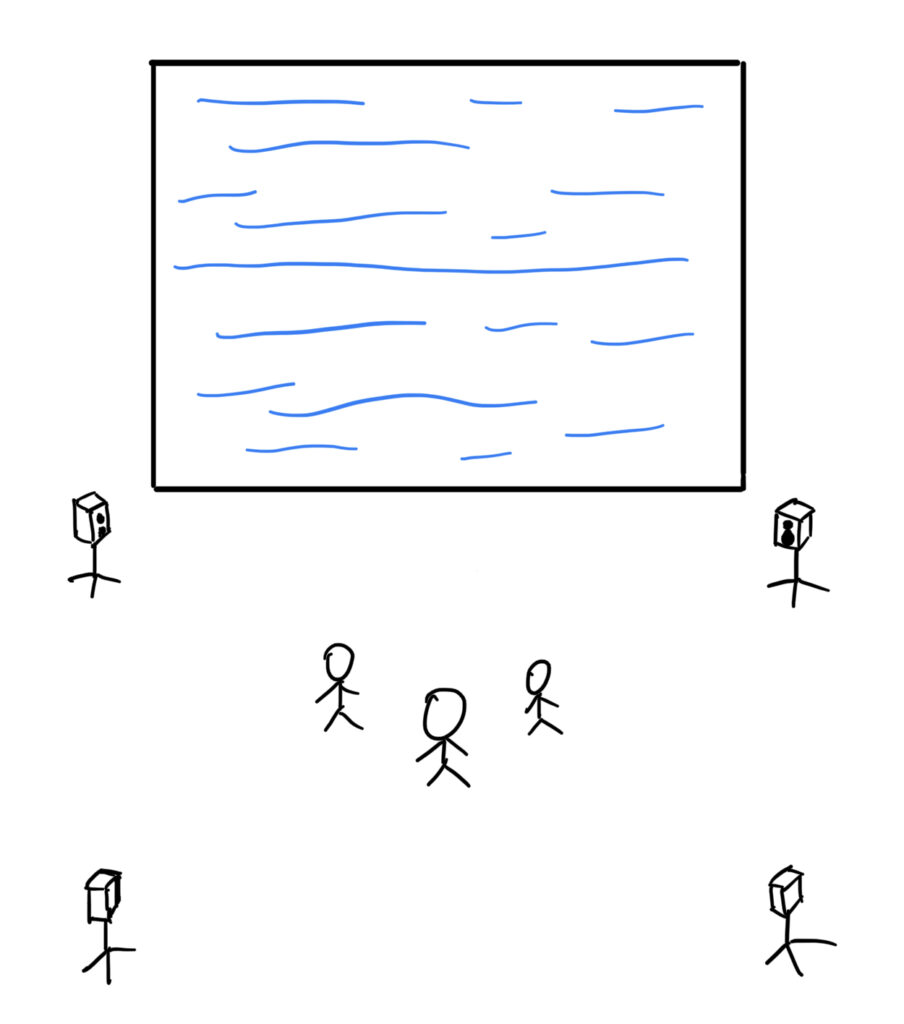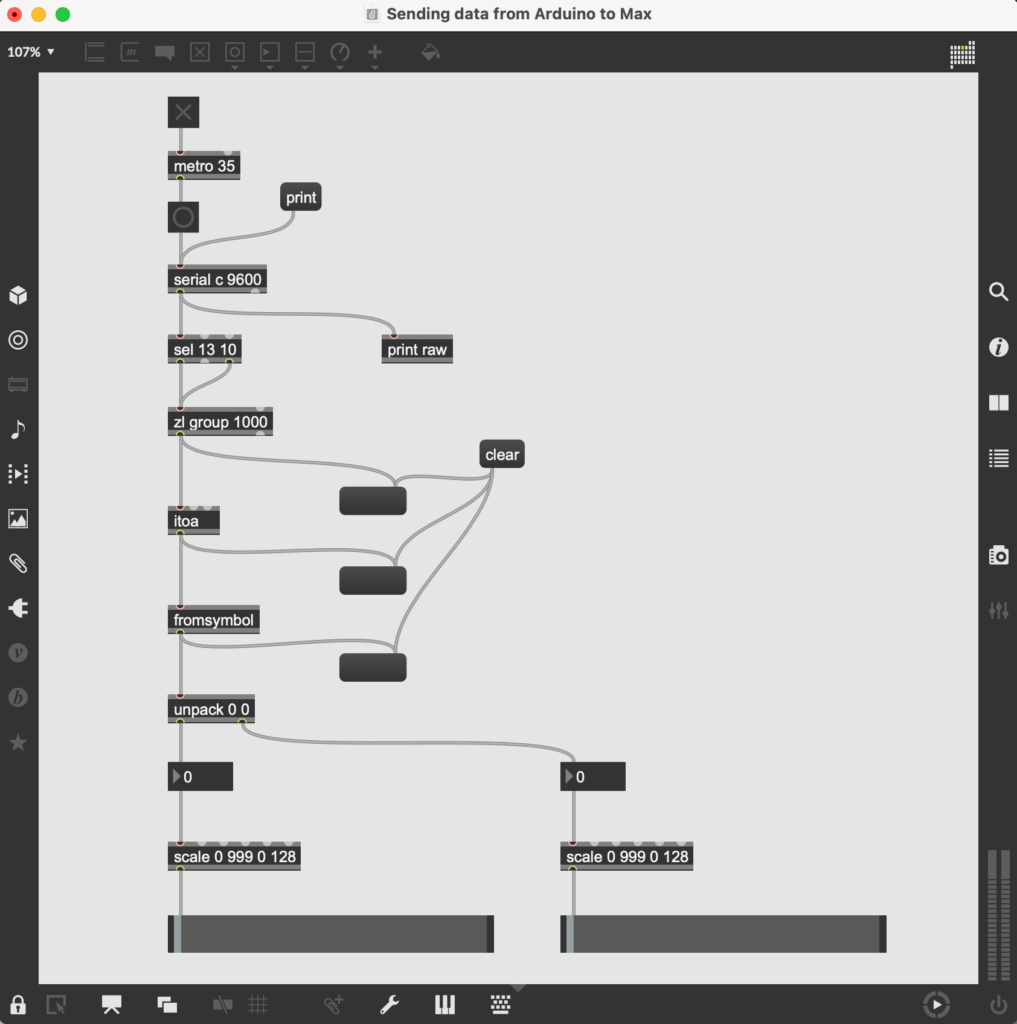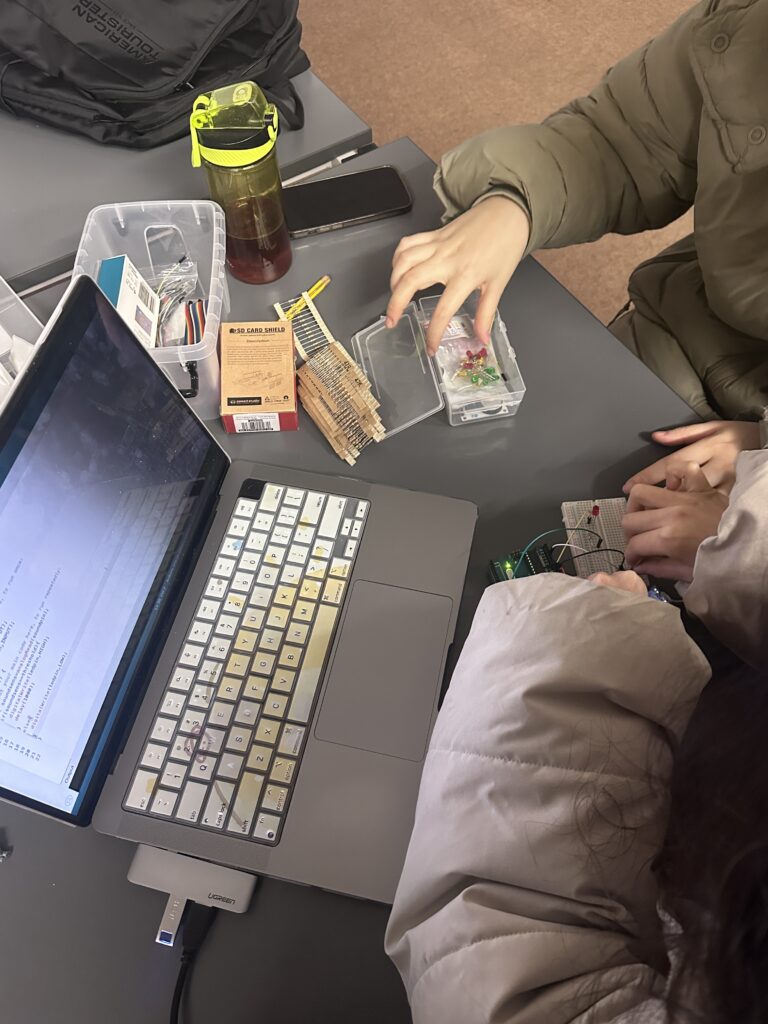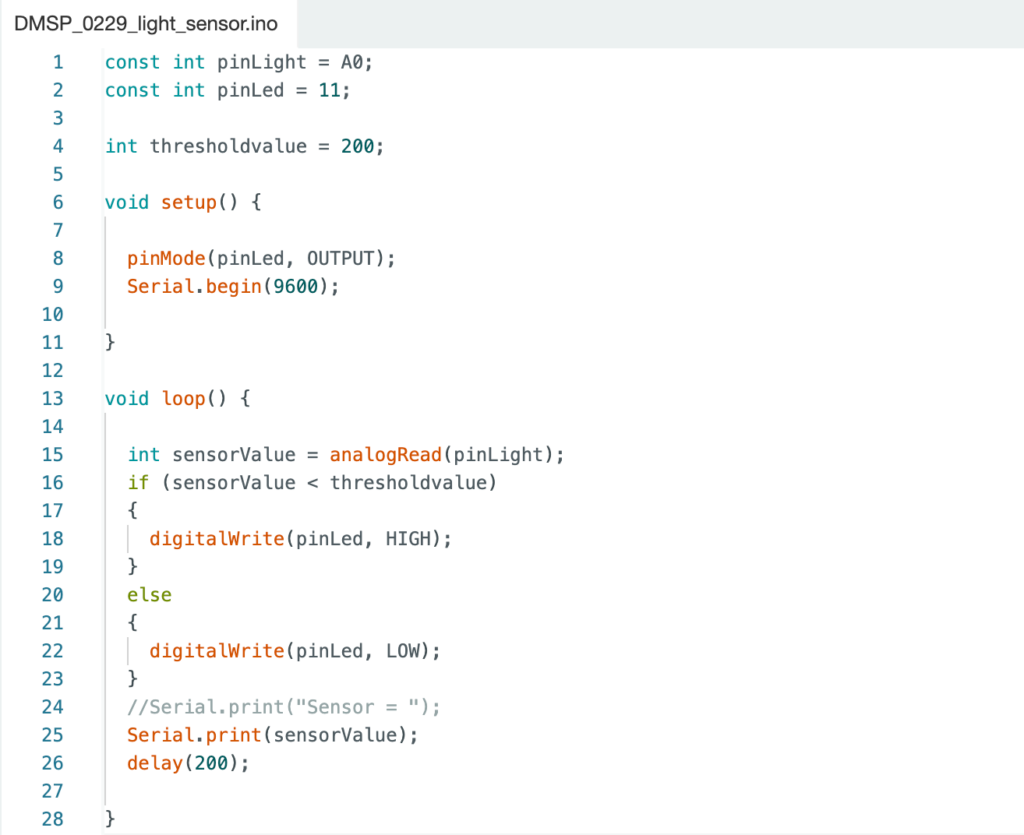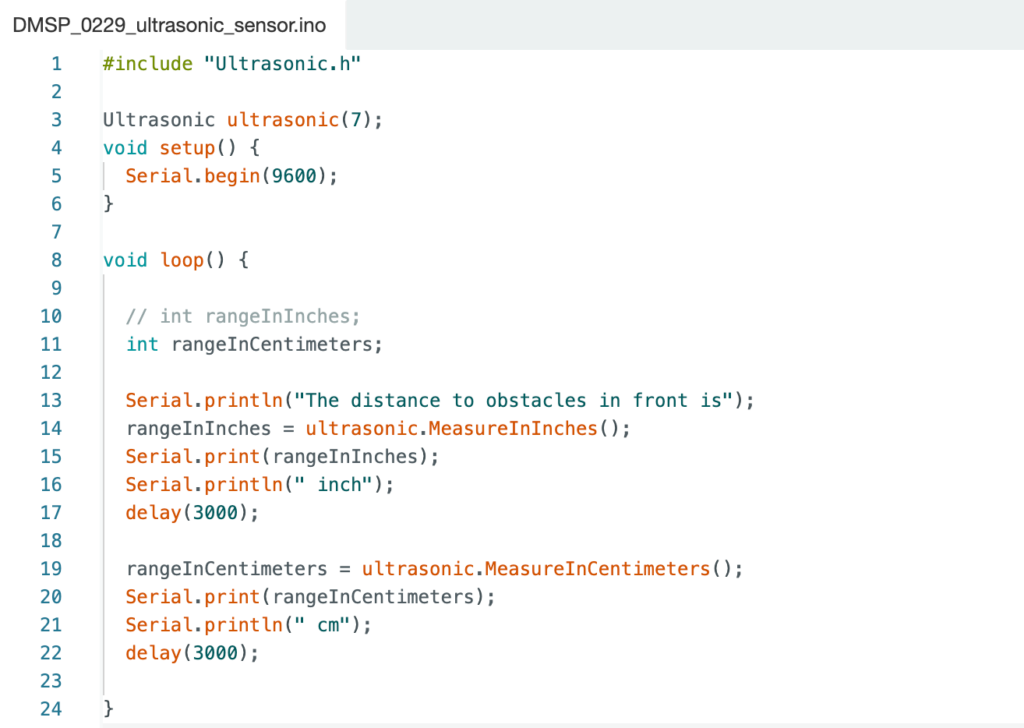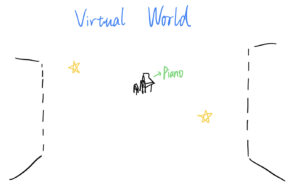In Week 8, I mainly integrated the project files from last week, so that two sensors can be connected to the same breadboard, and the values of the two sensors are concentrated in the same Arduino project and the same part of the Max patch (see Figure 1 and Figure 2).

Figure 1: Arduino Project Combining Light Sensor and Ultrasonic Sensor.
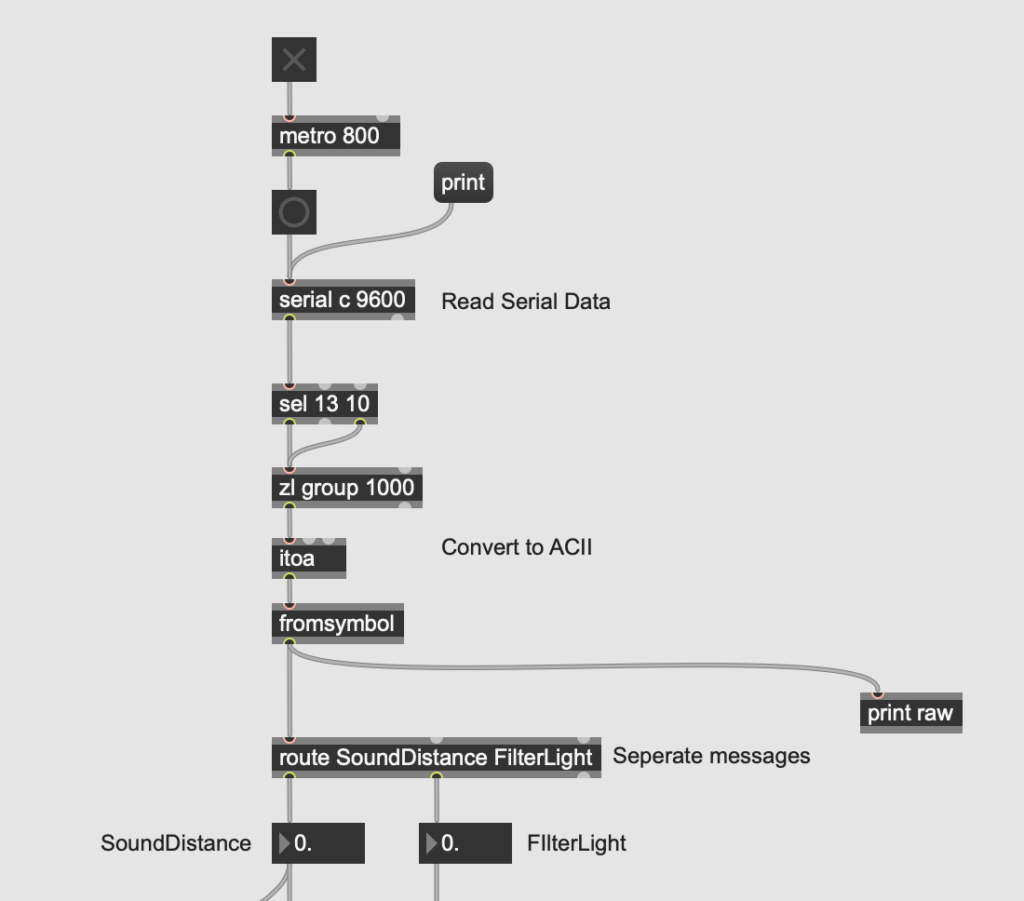
Figure 2: Max Patch that Combines Data Sent by Light Sensor and Ultrasonic Sensor.
In this way, during the testing phase and the final installation operation phase, the values of different sensors can be more clearly assigned to different parameters that need to be controlled. At the same time, it can ensure whether the sensors are working properly and errors can be eliminated relatively quickly (see Video 1).
Video 1: A Video Showing the Light Sensor and Ultrasonic Sensor Connected on the Same Breadboard and Sending Data to the Max Together.
However, another problem discovered this week is that the pattern in the visual part in the Max patch cannot be displayed normally in the Mesh. Patterns that should keep beating will get stuck. This is the main tougher issue that needs to be addressed before next week.
